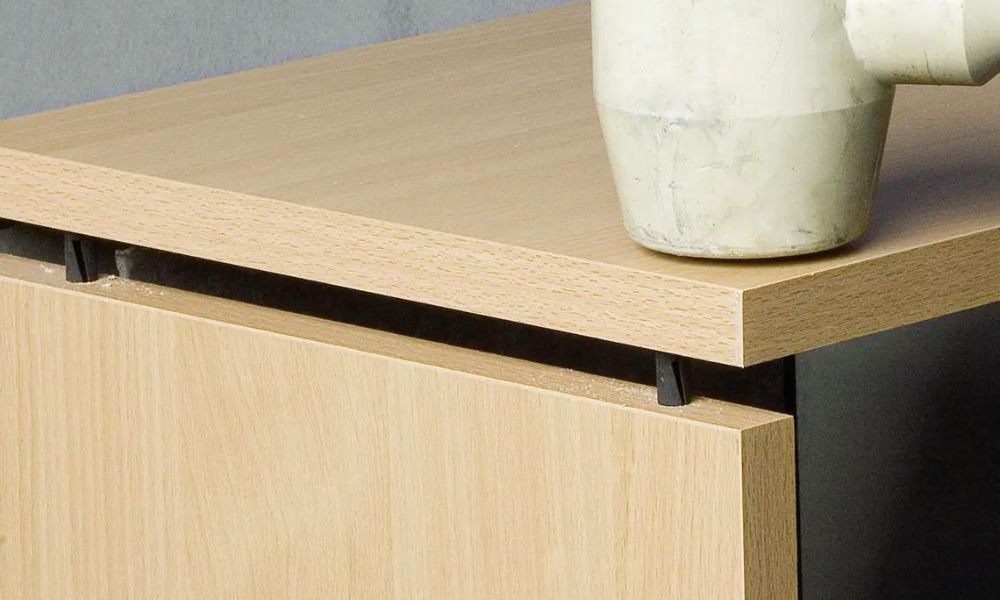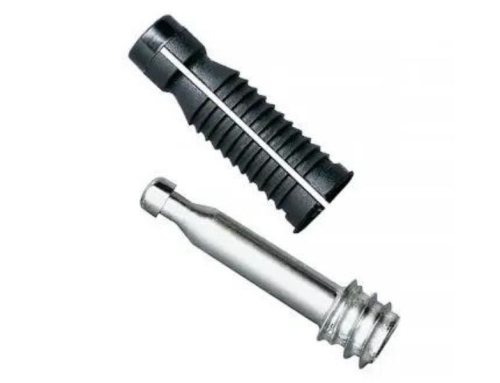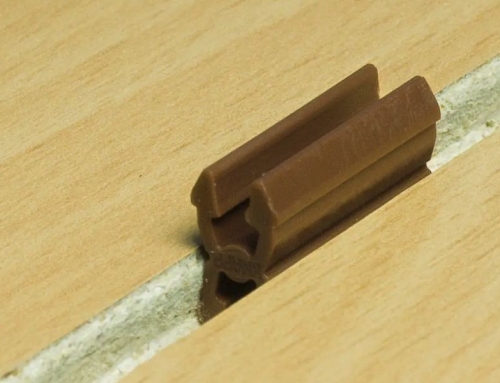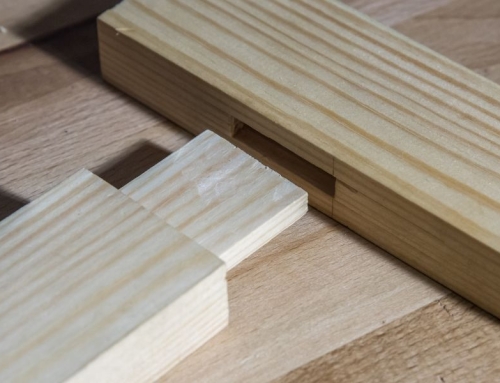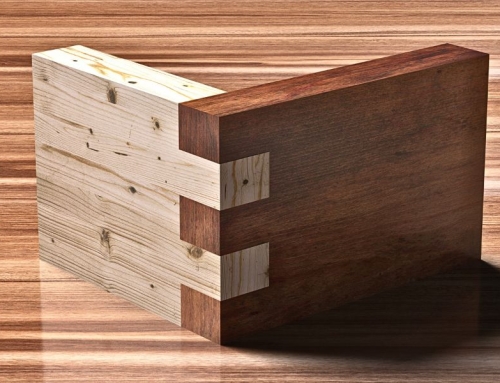Dowel joints are some of the most common and simple joints any craftsperson, woodworker, or carpenter can use. With simple measuring, drilling a few holes, and inserting a few pegs, you can create strong connections without using mechanical fasteners like screws or nails.
Although this method is less popular, using a glue-less dowel can speed up your production time and reduce inconsistencies in your work. Here’s how to create secure connections using dowel joinery for a perfect alignment every time.
What Is a Dowel Joint?
A dowel joint, or doweling, is a type of connector that joins two pieces of wood by drilling dowel holes in each piece and using a wooden peg to bring them together. Dowels bridge the two boards and hold things together, acting like a fastener. Dowels are commonly made from wood and come in various sizes. Dowels made from metal and plastic are adjustable for shelving construction.
You’re likelier to see dowel joints in woodworking and cabinetmaking projects because they’re great for securing joints or aligning two boards, like picture frames or drawers. A typical dowel joint is glued together and can swell, which causes inconsistencies in your work. However, our glue-less dowel connectors lock the joint in place and are invincible once assembled.
How To Make Secure Connections
Creating a secure connection with dowel joinery is simple once you get the hang of it. It all boils down to three steps: aligning your boards, drilling the holes, and attaching everything. Although it seems more complex, it only requires patience and special attention to detail to ensure your boards are secure and assembled.
Align the Boards
Start by aligning your boards when creating secure connections. Clamping them together at the sides facing out will help you know which side is correct. Mark the alignment center where you want to place the dowels on each board.
While you can manually complete this task, a dowel jig will come in handy. This device will keep your boards in place and allow you to move vertically between them, ensuring your holes are aligned between each piece of wood.
Drill the Holes for the Dowels
You can synchronize the holes’ depth using a stop included with your jig. If you prefer not to use a jig, you can use a drill bit to create your holes. The depth of your holes should be half the length of the dowel. However, if you plan to glue your dowels, leave a small space for the glue to expand.
Using a jig will keep your bit against the board while drilling, which is essential to making a secure connection with dowel joinery. If you’re not using a jig, you should use a dowel center. It will allow you to drill the holes on one board while leaving a mark on the other to use as a guide.
Attach Your Boards
Before you officially connect your boards, it’s critical that you test fit the joint. It should be snug, but you shouldn’t have to force it into the space. The joint should be flush without any gaps, and your dowels shouldn’t be visible. If you drilled your holes too deep, you could cut a small piece off a spare dowel to take up the extra space.
If you didn’t drill deep enough, set up your jig again and drill deeper. Again, if you plan on using glue, leave a little room at the end of the spot for your glue to expand.
Once you’re sure that the pieces fit together, you can insert our glue-less connectors! If you’re using glue, apply the adhesive to the end of the dowel and insert it into the hole of one board. Then, apply more sealant along the entire side of the joint of the second board.
After applying the glue, knock everything together and allow it to dry overnight to ensure everything is secure.
Why Are Dowel Joints Essential?
Whether you notice it or not, dowel joints are utilized in any craft, woodwork, or carpenter project. They firmly secure two wooden parts and are among the strongest methods of connecting wooden boards. Below, we will explain the other benefits of using dowel joints.
Extra Strength
One of the most common reasons why people use dowel joints is because of their extra strength and durability. Dowel joints can provide projects like tabletops or cabinets extra strength at the miter and butt joints.
You can also reinforce the strength by drilling a hole at the end of the joints and gluing dowels in the holes. The strength of your project’s joints will increase with dowels, enhancing the stability of the entire structure.
Proper Alignment
In most woodworking tasks, your clamps and adhesive are your best friends. They join multiple pieces to create one full structure. However, gluing and clamping your parts can lead to mistakes and improper alignment.
Dowels allow you to secure your joints at their proper alignment. They keep the joints in their correct position, preventing any misalignment or mistakes from happening to your piece. Your project is more likely to stay intact if it’s properly aligned.
Stronger Joints
Dowel joints provide extra strength to your structure. This is beneficial if your structure’s joints are subjected to various actions like twisting, pulling, or swiveling. Dowel connectors are easy to install and provide extra security than your typical pin and tail. They are great alternatives to biscuit joints since they’re not prone to bulging or swelling.
KNAPP Connectors has served the woodworking industry with innovative designs for over 30 years. Our connecting systems provide secure solutions that will work perfectly for all furniture or cabinet manufacturing. Wooden dowel joints require gluing, so we also offer metal and plastic connectors that can withstand any weather condition and provide consistency and durability.
We are committed to making your projects seamless and aesthetically pleasing while reducing production time. At KNAPP Connectors, we are confident that you will find your solution in our online store. Look at our products to see which connector would work best for you and your next task.

